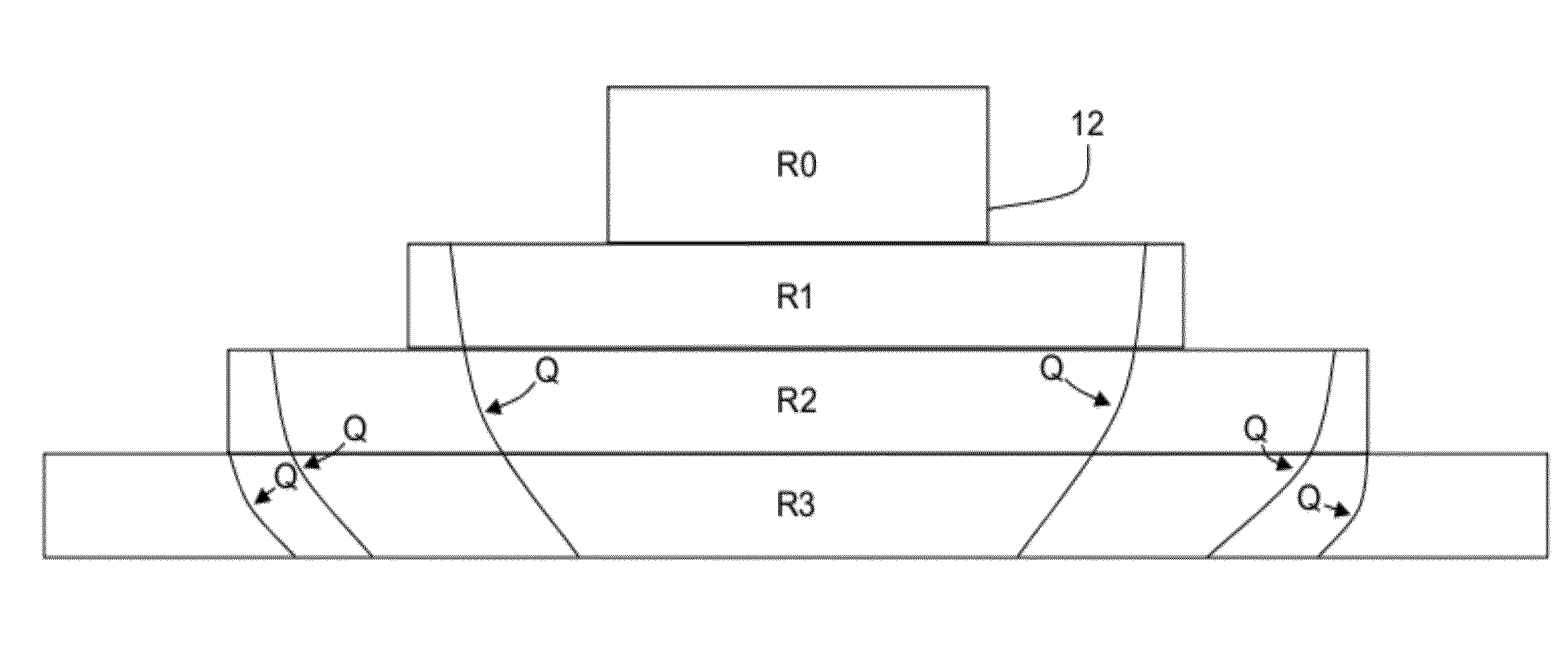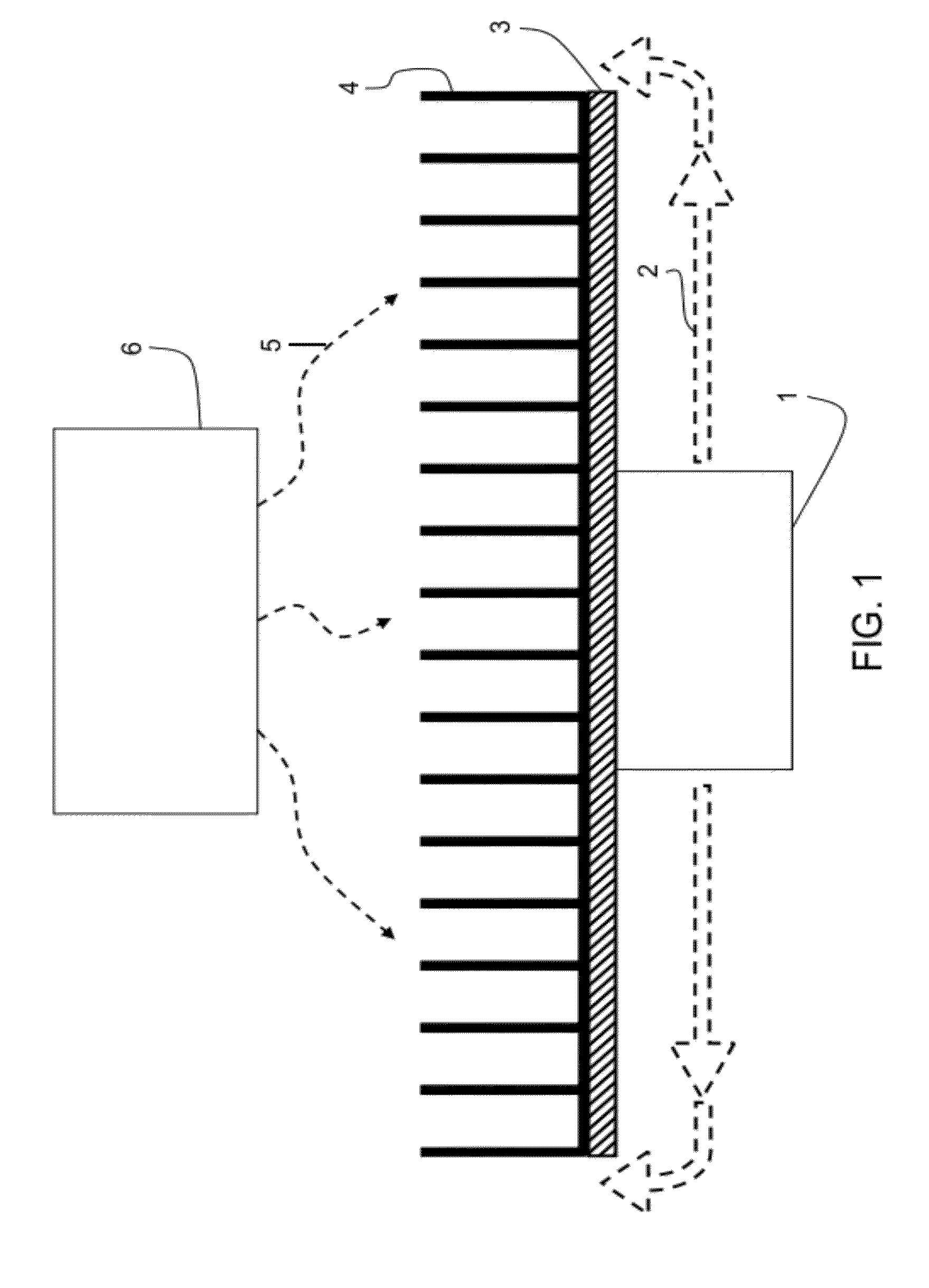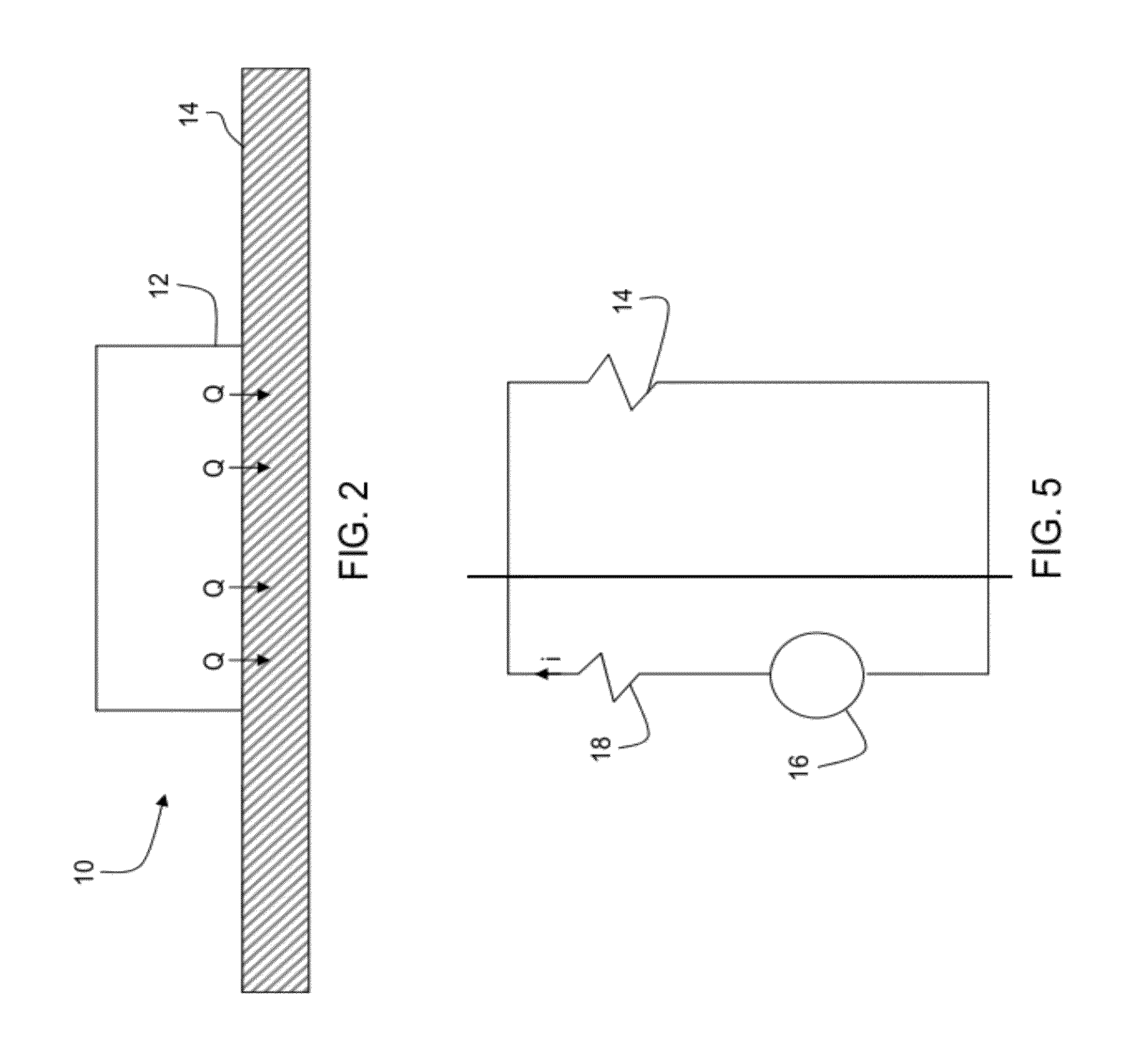Thermal Impedance Matching Using Common Materials
a technology of impedance matching and common materials, applied in the field of heat management systems, can solve the problems of increasing system size, weight/material/cost, high process inefficiency, etc., and achieve the effect of minimizing temperature change and dissipating hea
- Summary
- Abstract
- Description
- Claims
- Application Information
AI Technical Summary
Benefits of technology
Problems solved by technology
Method used
Image
Examples
example
[0135]FIGS. 31-36 show an embodiment of the present invention incorporating a variable-gradient layer. In this embodiment, a system 700 has a 30 Watt LED 702 where s first layer 704 of a copper, a second layer 710 of aluminum, a third layer 712 of a stainless steel, and a fourth layer 714 of variable-gradient material.
[0136]The fourth layer 714 has a distributed thermal impedance, such that a thermal impedance gradient is established within the fourth layer 714. In this embodiment, the fourth layer 714 has a low thermal impedance at an interface between the third layer 712 and the fourth layer 714 relative to the thermal impedance of the third layer 712 to a much lower thermal impedance relative to the third layer 712 at an interface between the fourth layer 414 an ambient layer, typically air or insulation.
[0137]In this embodiment, the fourth layer 714 was formed by suspending stainless steel wool 720 from the third layer 712. The steel wool 720 was then impregnated with a lower th...
PUM
 Login to View More
Login to View More Abstract
Description
Claims
Application Information
 Login to View More
Login to View More - R&D
- Intellectual Property
- Life Sciences
- Materials
- Tech Scout
- Unparalleled Data Quality
- Higher Quality Content
- 60% Fewer Hallucinations
Browse by: Latest US Patents, China's latest patents, Technical Efficacy Thesaurus, Application Domain, Technology Topic, Popular Technical Reports.
© 2025 PatSnap. All rights reserved.Legal|Privacy policy|Modern Slavery Act Transparency Statement|Sitemap|About US| Contact US: help@patsnap.com



